
Minecraft is all about, well, mining and crafting. Before you dig straight down, earnestly searching for gold, there are some things you need to know. This guide will help any Minecraft beginner find what they need!
Tools you'll need
- Torches: Torches are invaluable while mining. There is no natural light beneath the ground — unless you happen to run into lava — so you'll need to place torches along your mine to light things up. Bring a full bundle of 64 torches as well as some extra coal and sticks.
- Pickaxe: You're going to want to bring at least a stone pickaxe with you, as wood pickaxes don't last very long and you'll find yourself constantly stopping to make more. Crafting a few pickaxes before you begin is generally a good idea, as you can swap them out on the go.
- Shovel: Bring at least a stone shovel with you while mining, as they last much longer than wood shovels. You never know when you'll run into a vein of dirt or gravel. Like pickaxes, you can pre-craft a few shovels before starting your mining expedition.
- Food: Mining causes your hunger bar to deplete quickly, so you'll want to bring a decent amount of food with you. Having a full hunger bar also replenishes your health, perfect after running into a skeleton or zombie.
- Weapon: You're bound to run into a few enemy mobs while mining. If you're shaft mining, you can probably wall them off to avoid them, but if you're cave mining you'll likely have to put up a fight. Bringing a sword or bow and arrow with you is recommended. Always upgrade your sword when you discover new ore, as it is an invaluable tool for dispatching enemies.
- Armor: Any armor at all, whether leather, iron, gold, or diamond, is a good defense when starting out. As resources allow, you can upgrade your armor.
- Crafting table: Set down a crafting table somewhere safe in your mine in order to craft broken tools or more torches.
- Chest: Your inventory is bound to fill up when you're on a mining spree, so placing a chest somewhere safe and nearby your main mine is not a bad idea. You can come back, drop off resources, then head back out into the field.
- Wood planks: You won't find much wood underground, so bringing along some extra wood is a great idea. You never know when you'll need more sticks, a door, another chest, or another crafting table.
- Ladders: Getting stuck in a hole is never fun — craft some ladders before you head out to ensure you can climb out of any predicament.
Where you'll find ore
Bedrock can be found in the bottom four layers (four blocks) of the Overworld. Sea level in the Overworld is found, at its highest, at 62 blocks above bedrock. Keep this in mind when calculating where you'll place your mines.

Coal: Commonly found between layers 5 and 52 of the Overworld.

Iron: Commonly found between layers 5 and 54 of the Overworld.

Gold: Commonly found between layers 5 and 29 of the Overworld.

Diamond: Commonly found between layers 5 and 12 of the Overworld.

Redstone: Commonly found between layers 5 and 12 of the Overworld.
Get the Windows Central Newsletter
All the latest news, reviews, and guides for Windows and Xbox diehards.

Lapis lazuli: Commonly found between layers 14 and 16 of the Overworld.

Emerald: Commonly found between layers 5 and 29 of the Overworld.
Cave mines
Heading into a cave is likely one of the first things you'll do in the game — a glimmer of coal or iron will attract you, and before you know it you're in trouble without being prepared.
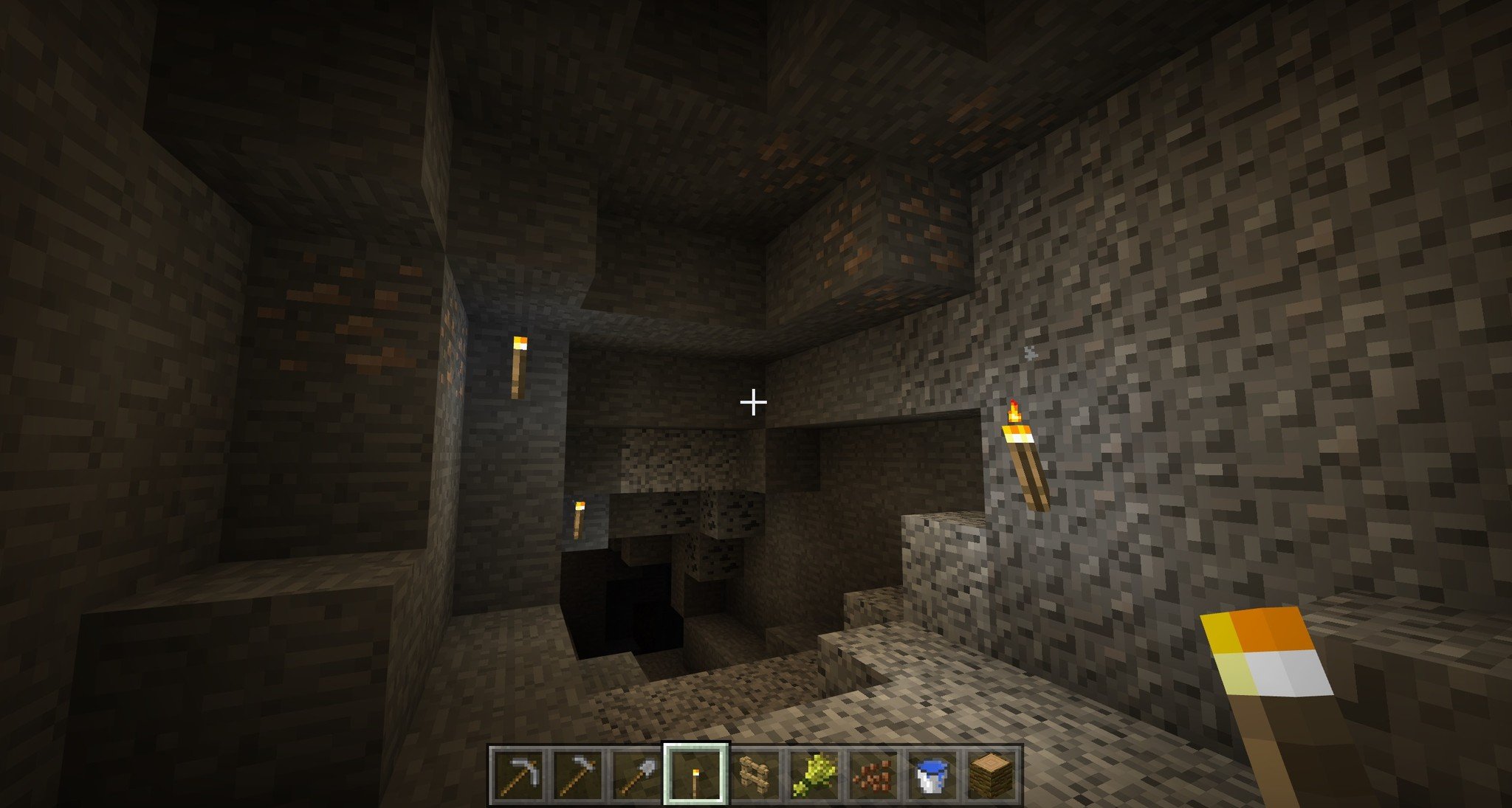
Cave mining with a plan, however, can be quite lucrative. Think of it as a mineshaft that's already been dug and has plenty of resources just waiting to be plucked.
There's no defined strategy on cave mining, but you generally want to be well prepared to fend off enemies — you're sure to encounter them. Bring a sword or bow and arrow, and, if you can, some armor.
Take your time placing torches and scouting ahead. You don't want to be in the middle of mining some precious iron when a creeper sneaks up behind you and explodes. Mark your way appropriately so you can find your way back — caves can be deceiving.
Also keep in mind that dead-ends sometimes actually lead to bigger things. Poke around with a shovel or pickaxe next time you reach a dead-end and see what you find.
Shaft mines
A shaft mine is probably the best place to start mining. You can start a shaft mine from the shelter you've already built, and can usually return without getting lost.
There are a few ways you can mine a shaft:

- Mine down in a diagonal fashion, going one block deeper each step. To get back up, you can either jump up each block the entire way, or you can place stairs for easier access.
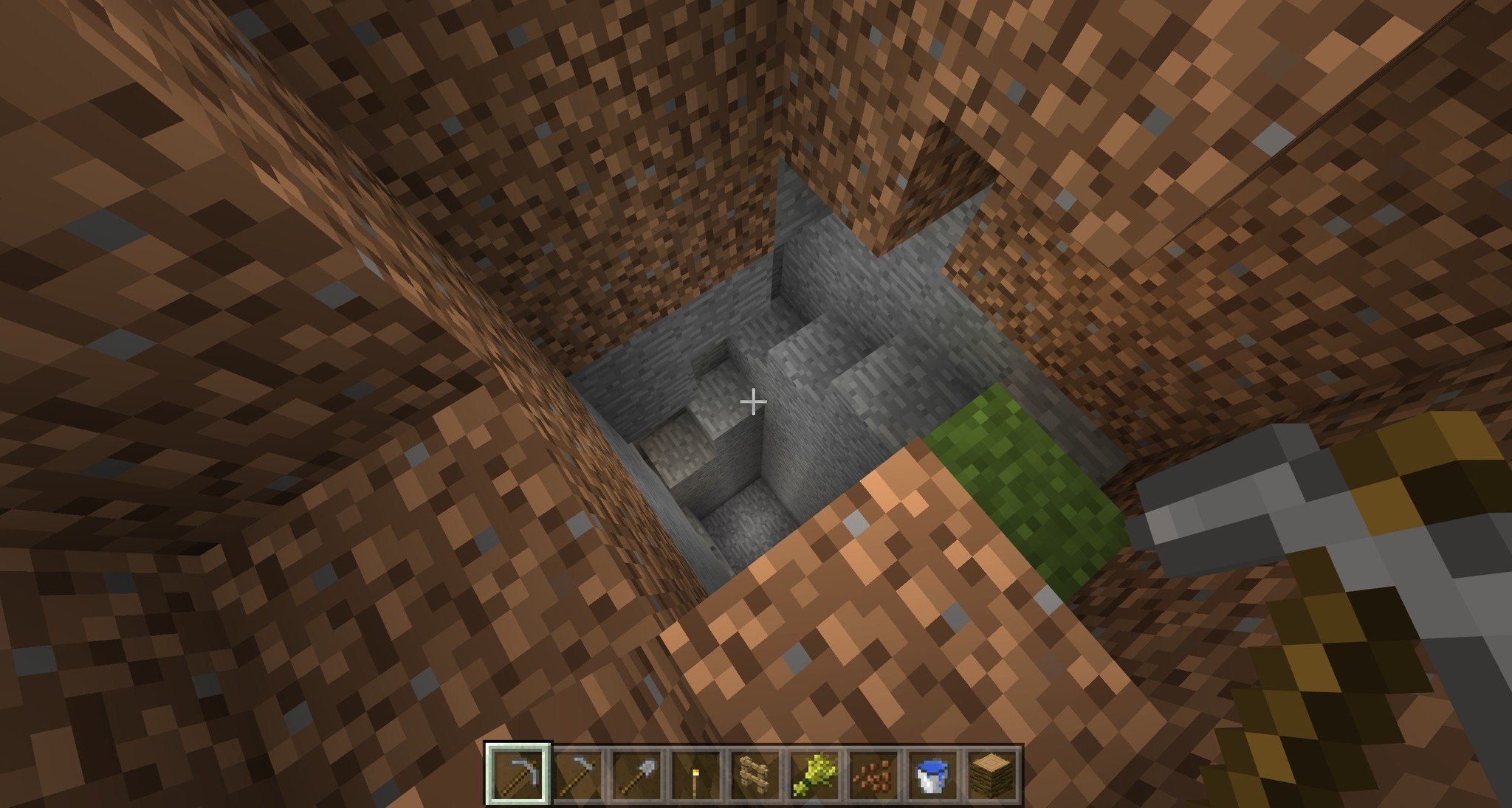
- Mine a spiral staircase down into the ground. Try going with a 4x4 or larger layout. Never dig straight down! You never know what's beneath you, and you can end up falling to your death.
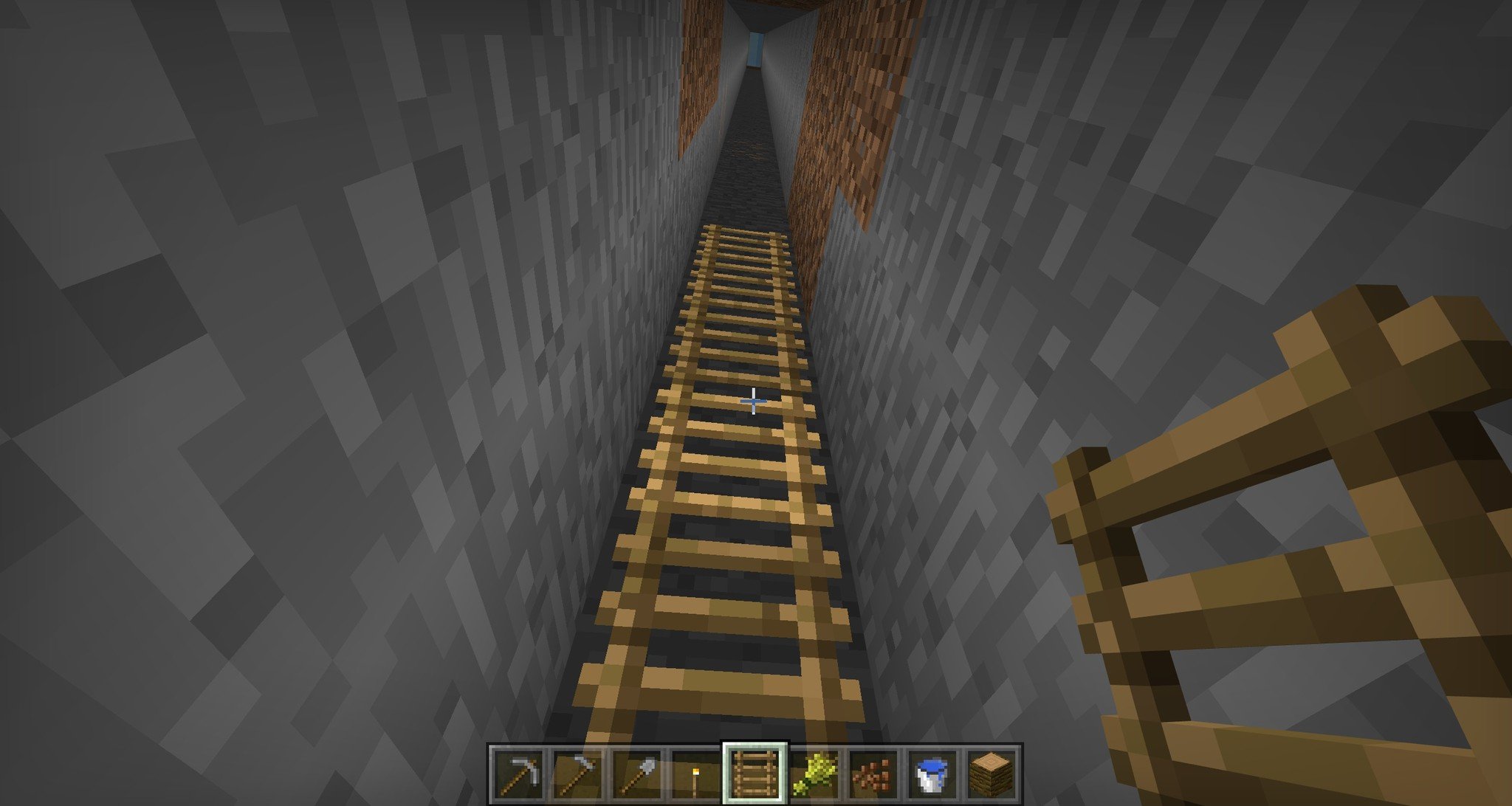
- Mine a 2x1 shaft straight down — that way you're not mining the block directly beneath you, but you'll still quickly make downward progress. Make sure you bring enough ladders to return to the surface! This is a great method if you plan on going with a branch mining technique.
Branch mines
You generally want to start out with a shaft mine in order to reach a suitable depth — this will act as your access shaft. If you know you're at sea level when you start mining down, you can count to where you think iron and diamond will be. If you're unsure of your depth, mine down until you hit bedrock, then count back up to a suitable depth.

A good strategy is to mine a horizontal passage in all four directions away from your initial access shaft. The distance you mine is up to you.
After you have your four main corridors extending from the access shaft, begin mining branches off your corridors, leaving two blocks between each branch. This way you're sure to not miss any veins of the ore you're looking for.
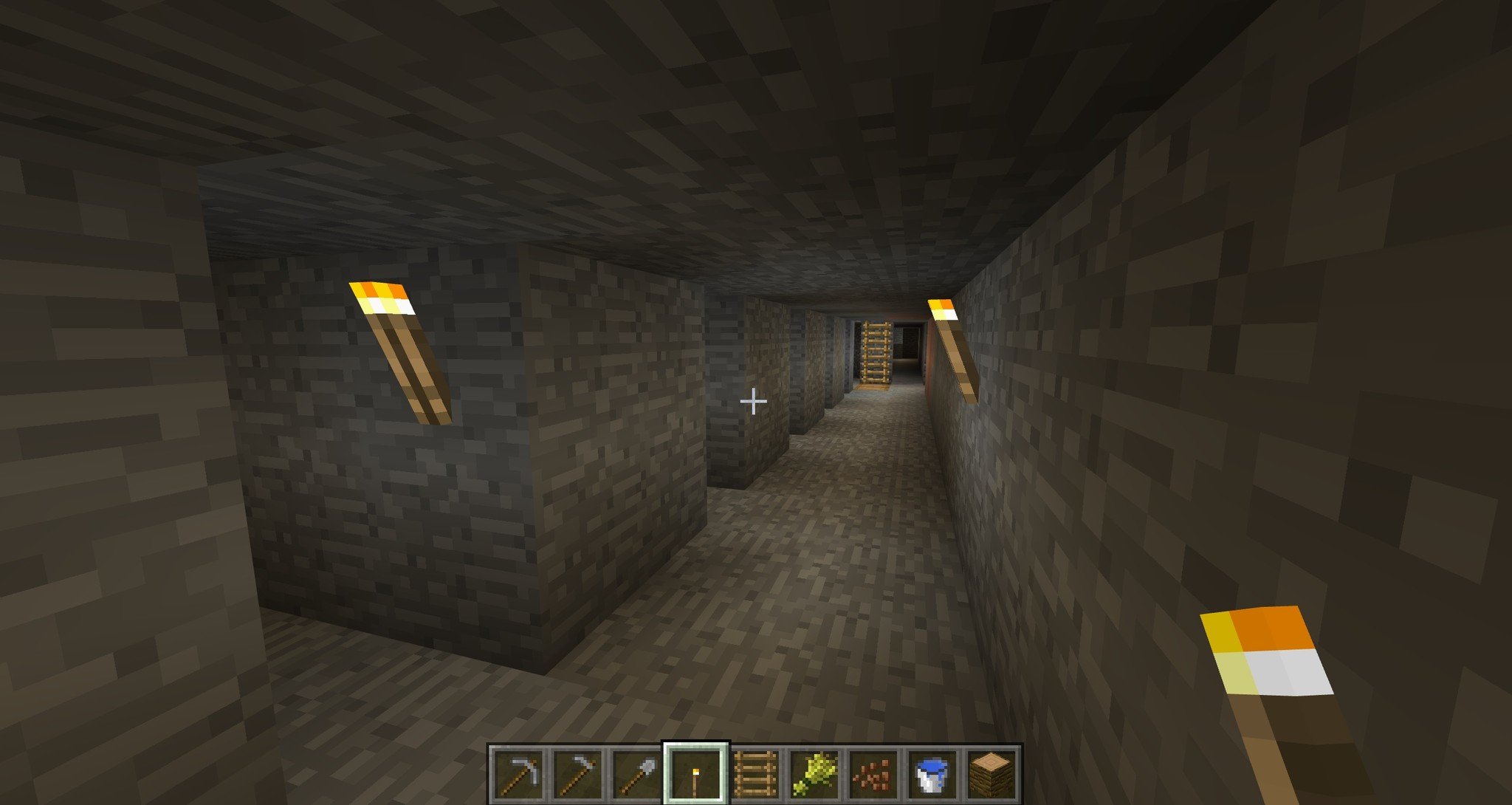
Repeat this process as many times as you want, and make sure you place a marker of some sort — a sign or an arrow made from torches — so you don't get lost. As your mine grows, it can become quite confusing to navigate.
Quarry mines
If you love a visual representation of the time you've put in mining, you'll love a good quarry mine. While this definitely isn't the most efficient way to mine ore, it is a fantastic way of gathering the resources needed — stone, granite, andesite, etc. — to make a nice looking fortress.
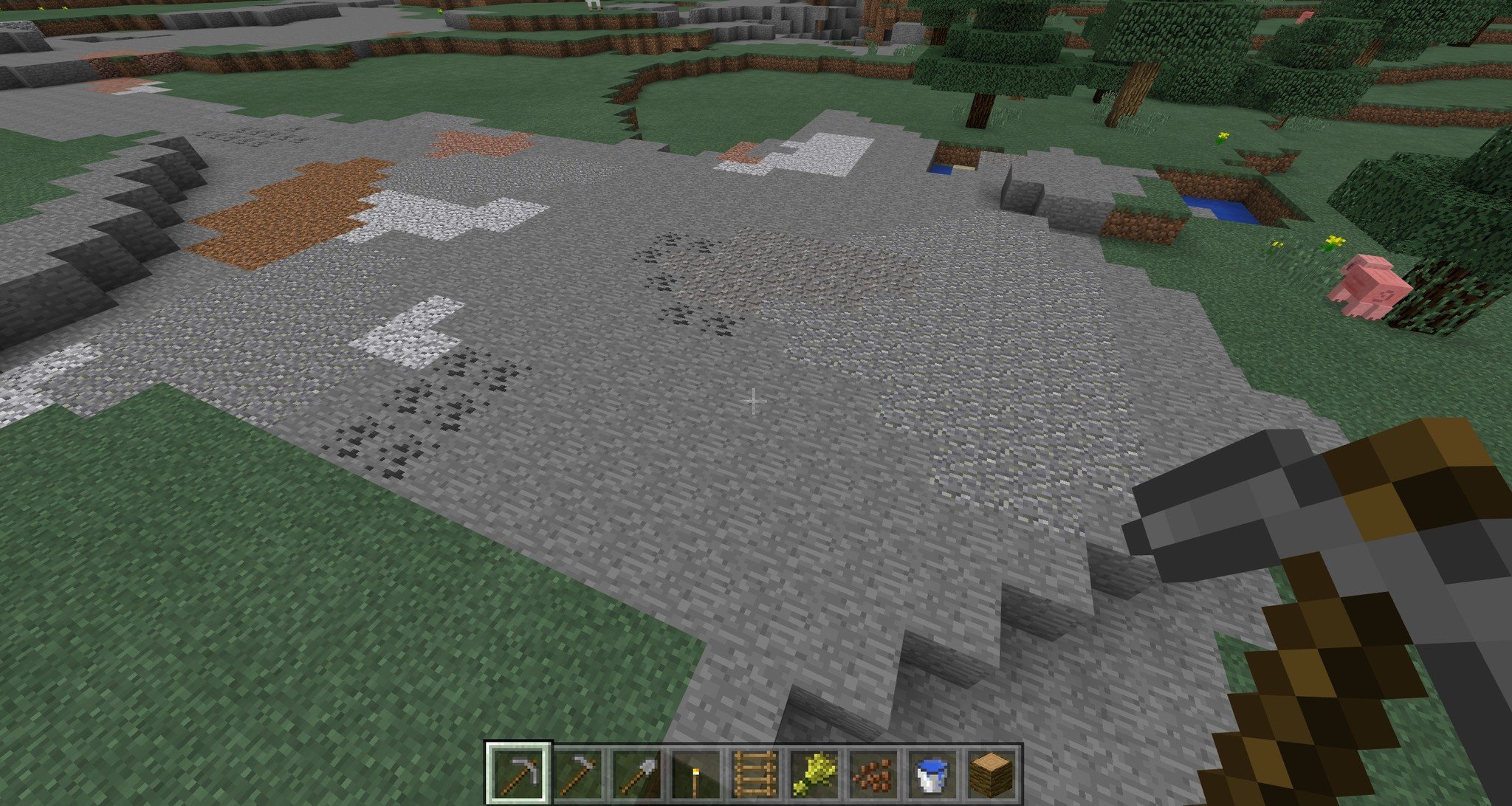
Start by finding a large stone area, preferably flat, to start your quarry mine. If you'd like some extra protection, build some walls or place fences around the planned perimeter. Next, start strip mining the area one or two levels at a time.
Be sure to leave a set of ascending blocks or stairs around the perimeter for easy access. You can also use ladders, but ascending blocks will set you up nicely if you plan on using rails and carts later on in the game when resources allow.
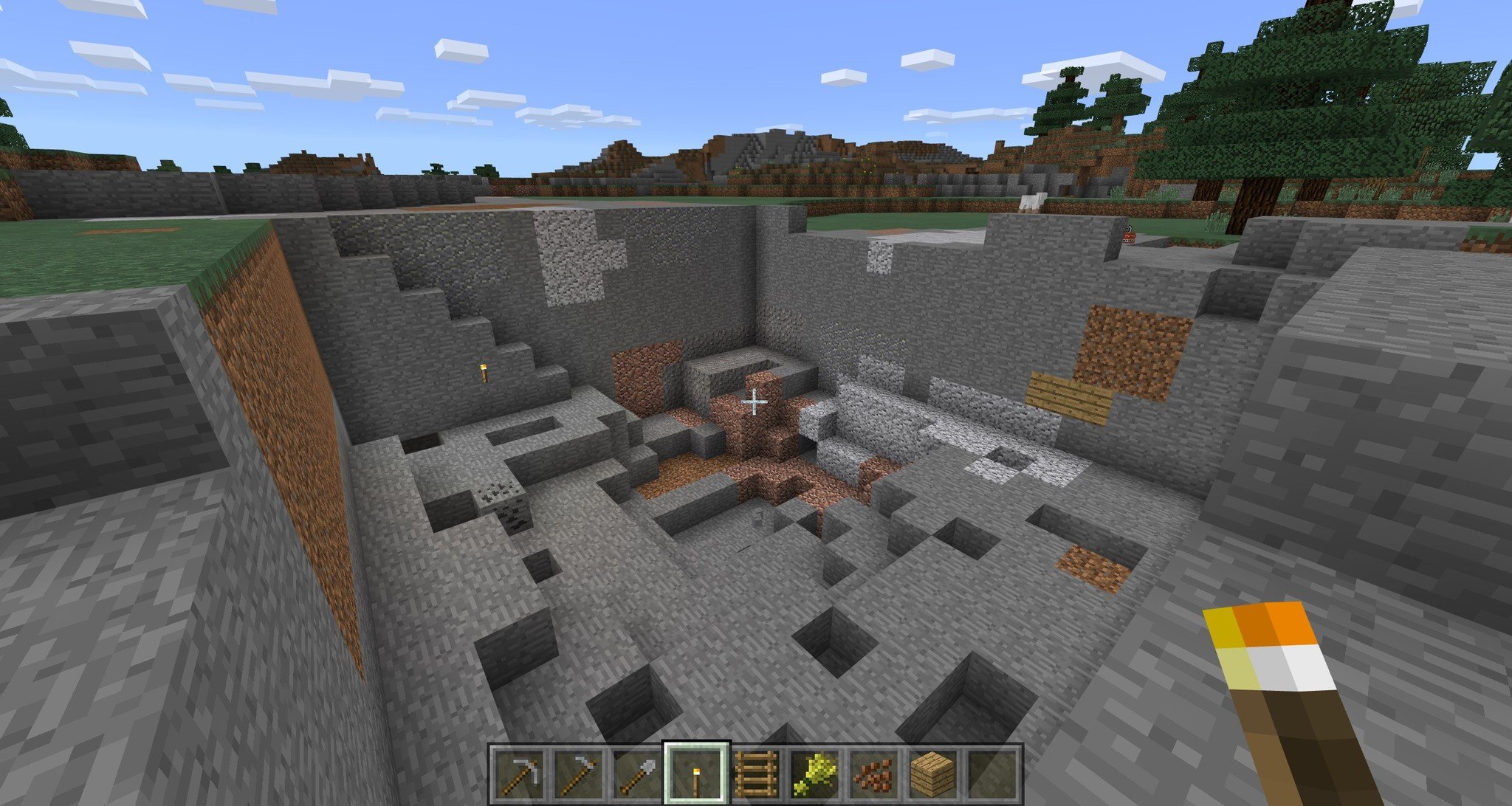
You're sure to run into cave systems as you descend. You can explore the caves, lighting them with torches as you go to ensure no enemy mobs spawn. Alternatively, you can board the caves up for later when you're better prepared to deal with whatever lies within.

Cale Hunt brings to Windows Central more than eight years of experience writing about laptops, PCs, accessories, games, and beyond. If it runs Windows or in some way complements the hardware, there’s a good chance he knows about it, has written about it, or is already busy testing it.
